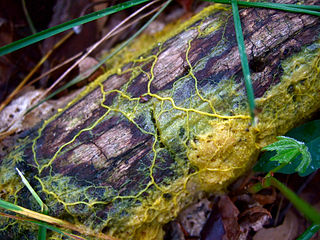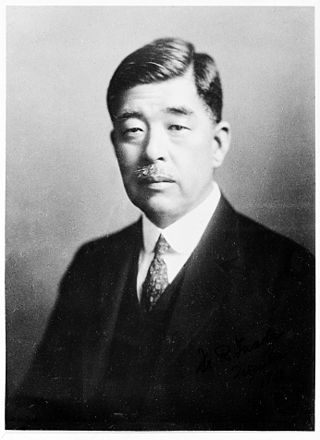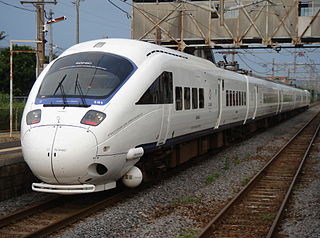Related Research Articles

Slime mold or slime mould is an informal name given to a polyphyletic assemblage of unrelated eukaryotic organisms in the Stramenopiles, Rhizaria, Discoba, Amoebozoa and Holomycota. Most are microscopic; those in the Myxogastria form larger plasmodial slime molds visible to the naked eye. The slime mold life cycle includes a free-living single-celled stage and the formation of spores. Spores are often produced in macroscopic multicellular or multinucleate fruiting bodies that may be formed through aggregation or fusion; aggregation is driven by chemical signals called acrasins. Slime molds contribute to the decomposition of dead vegetation; some are parasitic.

A mold or mould is one of the structures that certain fungi can form. The dust-like, colored appearance of molds is due to the formation of spores containing fungal secondary metabolites. The spores are the dispersal units of the fungi. Not all fungi form molds. Some fungi form mushrooms; others grow as single cells and are called microfungi.

Mycetozoa is a polyphyletic grouping of slime molds. It was originally thought to be a monophyletic clade, but recently it was discovered that protostelia are a polyphyletic group within Conosa.

Kyushu University, abbreviated to Kyudai, is a Japanese national university located in Fukuoka, on the island of Kyushu.

Goethe University Frankfurt is a public research university located in Frankfurt am Main, Germany. It was founded in 1914 as a citizens' university, which means it was founded and funded by the wealthy and active liberal citizenry of Frankfurt. The original name in German was Universität Frankfurt am Main. In 1932, the university's name was extended in honour of one of the most famous native sons of Frankfurt, the poet, philosopher and writer/dramatist Johann Wolfgang von Goethe. The university currently has around 45,000 students, distributed across four major campuses within the city.
Harry Max Markowitz was an American economist who received the 1989 John von Neumann Theory Prize and the 1990 Nobel Memorial Prize in Economic Sciences.
Yoshimoto Kogyo Holdings Co., Ltd. is a Japanese entertainment conglomerate. It was founded in 1912, Osaka, as a traditional theatre, and has since grown to be one of the most influential companies in Japan, employing most of Japan's popular owarai (comedy) talent, producing and promoting the shows they appear in. The two main headquarters are stationed in Osaka and Tokyo.
Microbial intelligence is the intelligence shown by microorganisms. The concept encompasses complex adaptive behavior shown by single cells, and altruistic or cooperative behavior in populations of like or unlike cells mediated by chemical signalling that induces physiological or behavioral changes in cells and influences colony structures.

Physarum polycephalum, an acellular slime mold or myxomycete popularly known as "the blob", is a protist with diverse cellular forms and broad geographic distribution. The “acellular” moniker derives from the plasmodial stage of the life cycle: the plasmodium is a bright yellow macroscopic multinucleate coenocyte shaped in a network of interlaced tubes. This stage of the life cycle, along with its preference for damp shady habitats, likely contributed to the original mischaracterization of the organism as a fungus. P. polycephalum is used as a model organism for research into motility, cellular differentiation, chemotaxis, cellular compatibility, and the cell cycle.
John Tyler Bonner was an American biologist who was a professor in the Department of Ecology and Evolutionary Biology at Princeton University. He was a pioneer in the use of cellular slime molds to understand evolution and development over a career of 40 years and was one of the world's leading experts on cellular slime moulds. Arizona State University says that the establishment and growth of developmental-evolutionary biology owes a great debt to the work of Bonner's studies. His work is highly readable and unusually clearly written and his contributions have made many complicated ideas of biology accessible to a wide audience.

Toshihide Maskawa was a Japanese theoretical physicist known for his work on CP-violation who was awarded one quarter of the 2008 Nobel Prize in Physics "for the discovery of the origin of the broken symmetry which predicts the existence of at least three families of quarks in nature."

Ryukichi Inada was a Japanese physician, a prominent academic, and bacteriologist researcher. He was the discoverer of the Weil's disease pathogen. In addition to his life's work in early 20th-century Japanese medical education, he was a pioneer in Japanese clinical cardiology and oncology.

SUGOCA is a Japanese rechargeable contactless smart card ticketing system for public transport in Fukuoka Prefecture and environs. The Kyushu Railway Company introduced the system on March 1, 2009. The name is an acronym of "Smart Urban GOing CArd", while sugoka (凄か) in the local Kyūshū dialect means "great". Like other electronic fare collection systems in Japan, the card uses RFID technology developed by Sony Corporation, known as FeliCa. American graphic artist Rodney Greenblat designed its official mascot, a frog with a clock.

Sir Andre Konstantin Geim is a Russian-born Dutch–British physicist working in England in the School of Physics and Astronomy at the University of Manchester.
The Mathematical Society of Japan is a learned society for mathematics in Japan.
Nada High School, is private, college-preparatory, boys school located in Kobe, Hyōgo Prefecture, Japan. Nada High School is well known for its severe entrance examination and superior education especially in sciences. Nada High School has sent the largest number of its students to University of Tokyo, Kyoto University, and other top-tier medical universities in Japan. Nada High School also sends its graduates to prestigious universities abroad

The Hitachi A-train is a family of rail rolling stock built and designed by Hitachi Rail using a common base and construction techniques. The stock is designed to facilitate a number of product life-cycle improvements including ease of manufacture, increased energy efficiency, and recyclability.
Andrew Adamatzky is a British computer scientist, who is a Director of the Unconventional Computing Laboratory and Professor in Unconventional Computing at the Department of Computer Science and Creative Technology, University of the West of England, Bristol, United Kingdom.
Toshiyuki Nakagaki is a Japanese professor, biologist, ethologist at the Research Institute of Electronic Science (RIES). He is famous for leading experiments relating to slime mold, specifically its ability to solve mazes as a without a brain.
References
- ↑ "Kyushu University, Atsushi Tero profile". kyushu-u.elsevierpure.com.
- ↑ Tsang, Jennifer (July 24, 2017). "How Slime Molds Affect Philosophy". www.mbl.edu.
- ↑ Starr, Michael (November 6, 2022). "Slime Molds Redefine Intelligence". www.sciencealert.com.
- ↑ Metcalfe, John (July 23, 2012). "Mapping Tokyo's Railway Using Slime Molds". www.bloomberg.com.
- ↑ Yong, Ed (2010-09-08). "Let slime moulds do the thinking!". The Guardian. ISSN 0261-3077 . Retrieved 2024-01-03.
- ↑ "Better transit design through ... slime mold?". NBC News. 2010-01-21. Retrieved 2024-01-03.
- ↑ Masatoshi, Shimizu (March 24, 2017). "Maze-Solving Slime Mold Ig Nobel Prize". www.nippon.com.
- ↑ Wilton, Pete (Oct 1, 2010). "Slime Mold Transportation Ig Nobel Prize". www.ox.ac.uk.